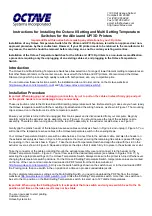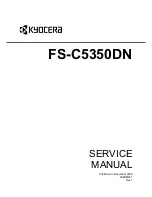
You may also wonder why the program prints not only the differ-
ent pin patterns but also the character
“J”
a number of times. The
reason lies in the number of columns you reserved with the graphics
command. After the LX-86 receives all the numbers reserved by a
graphics command-50 in this case-it leaves the graphics mode and
resumes interpreting numbers as printable characters or print com-
mands.
Since the incorrect program has sent many extra numbers, mainly
10s
and
13s,
the 50 columns reserved are filled before the loop in line
40 has been executed 50 times. Therefore, during the last passes of the
loop the Ix-86 interprets
CHR$(74)
as the ASCII code for “J” and
prints that character each of the last 35 passes of the loop.
If you want to make the program work correctly, put the line-
spacing command in line 10, delete line 30, and add two semicolons:
one at the end of line 20 and one between CHR$(74) and the colon in
line 40.
We have explained this incorrect program in detail so that you will
remember two important tips about using the graphics command:
l
Use semicolons to prevent the LX-86 from printing carriage re-
turn and line feed codes as pin patterns.
l
Do not put any other commands between the graphics command
and its data.
Our example should help you understand the graphics mode better
and may help you find the problem when one of your own programs
gives you unexpected results.
String variables
In
a long and complicated graphics program, typing in the graphics
command or repetitive data numbers over and over can become time-
consuming.
You
can avoid much of the repetitive typing by storing
commands and data in string variables.
Look at the program below. It is the same as the multiple-line
exercise earlier in the chapter except for the string variables.
86
Summary of Contents for LX-86
Page 1: ...EPSON LX 86 TM PRINTER User s Manual ...
Page 30: ......
















































